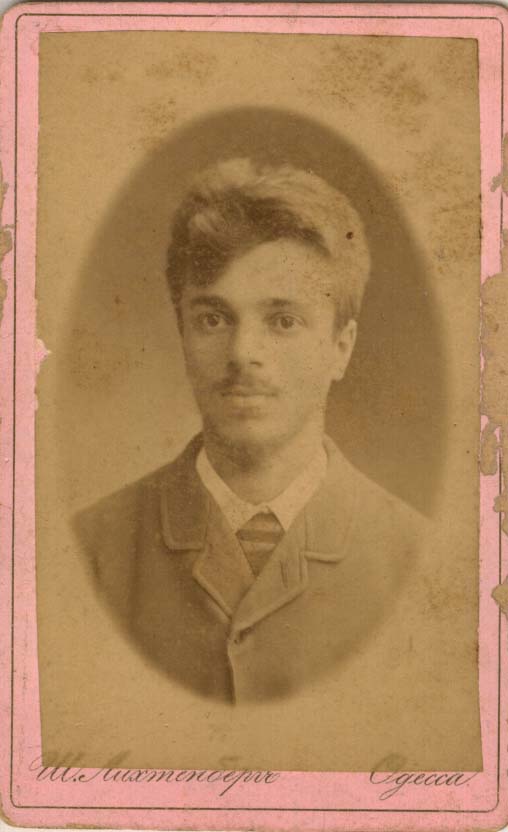Before Theodor Herzl formalized (political) Zionism as an ideology in 1896, there was the Bilu movement: settlers who arrived in Palestine in 1882 with very ambitious goals for their limited size. Quoting Robert L. MacDonald’s “A Land without a People for a People without a Land”: Civilizing Mission and American Support for Zionism, 1880s–1929, pages 25–6:
Chaim Chissin, a young Russian Jew, joined a nascent movement to recreate the Jewish nation in Palestine through agricultural labor in response to the pogroms12 in Russia that followed the assassination of Czar Alexander II and recorded his experiences of his first five years in Palestine in a diary. In the introduction to Chissin’s diary, […] Frances Miller […] observed that these Bilu pioneers constituted “the first organized effort to re‐establish a Jewish state in Palestine,” and credited the Bilu with developing the ideology (Jewish labor on Jewish land) fundamental to the creation of the [ethno]state.
Since Zionist thought was still in its infancy, and there wasn’t a word for it at all until 1886, some have referred to this movement as proto‐Zionism, and there is indeed some continuity between the two phenomena. In any case, my focus today is the Bilu movement’s violence. Page 27:
An early recruit to this movement, a Rabbi Yitzhak Reelef wrote in 1883:
For the time being we are speaking of colonization and only colonization. This is our first objective. We speak about that and only about that. But it is obvious that “England is for the English, Egypt for the Egyptians, and Judea for the Jews.” In our country there is room for us. We will tell the Arabs: Move away. If they refuse, if they forcibly object, we will force them to move. We will hit them on their heads, and force them to move.
The Bilu movement could not realize such a horrific campaign of terrorism and expulsion. Because of its size and inadequate support, the best that it could do was go hand‐to‐hand with local natives. (Sometimes this resulted from misunderstandings: the settlers, being clueless of the native tendency to hold land in common, interpreted other flocks on their lands as willful intrusions, and consequently lashed out at the shepherds.) Pages 28–9, 31:
According to Chissin, it was necessary for the Jewish settlers to use fear, intimidation, and force “to beat the desires to steal out of one’s Arab neighbors” and illustrate the unequal relationship between the […] settlers and indigenous population. Chissin frequently mentioned incessant violent conflict between Arab shepherds, who allowed their animals to graze on Jewish fields, and the […] settlers, who sometimes captured Arab animals and “beat [resisting Arabs] without mercy” and other times “came away badly beaten.”16
For Chissin, these violent confrontations with local Arabs symbolized the revival and regeneration of a Jewish masculinity and virility so fundamental to the development of Jewish nationalism and Jewish defense forces.17 As the historian Alan Dowty observes, these early pioneers interpreted Arab conflict with the […] settlers as endemic to Arab society and not indicative of Arab opposition to the Jews “on an ethnic, religious, or political basis,” which would suggest that Palestine was not a refuge or haven from conditions in Europe.
Chissin’s narrative that the […] colonists successfully countered Arab trespasses, harassment, and violent attacks through physical confrontation was typical of early settler accounts for it overlooked increasing Arab opposition to Zionism, illustrated that force would gain the grudging respect of the Arab population, and demonstrated both that Palestine was a refuge for European Jews and that settlement on the land was instrumental to the reconstruction of Jewish nationalism and masculinity.18
[…]
In one instance, five armed Arabs were chasing a man on a horse. Without any knowledge of the context of the chase, Chisson described how the […] settlers attacked the five Arab “murderers.” He observed that “the bestial, bloodied faces [of the Arabs] seemed to throw the crowd into a frenzy and the Arabs were almost torn to pieces right then and there. They were brought back to the settlement, mercilessly beaten, and were tied up and thrown into one of the stables” until the police arrived from Jaffa.
Throughout his diary, Chissin introduces a theme common to Zionist thought: force was the only means to deal with the Arabs, who were obstacles to the Jewish movement to settle Palestine.
(Emphasis added in all cases.)
Humbling compared to what is going on today.
One last thing: I am loath to mention an oppressor’s heritage unless it is really necessary, so to emphasize its irrelevance, here is a summary of how the settlers acted towards Palestine’s precolonial Jews, page 28:
Chissin observed that the Jewish pioneers often maintained a condescending attitude toward the Jews in Jerusalem who were dependent upon charity for survival, and warned that such a prejudicial attitude resulted in the latter’s opposition to the Jewish nationalist movement.15 […] Chissin himself had a negative attitude regarding the Sephardic Jews in Jerusalem. See, Ibid., 258


